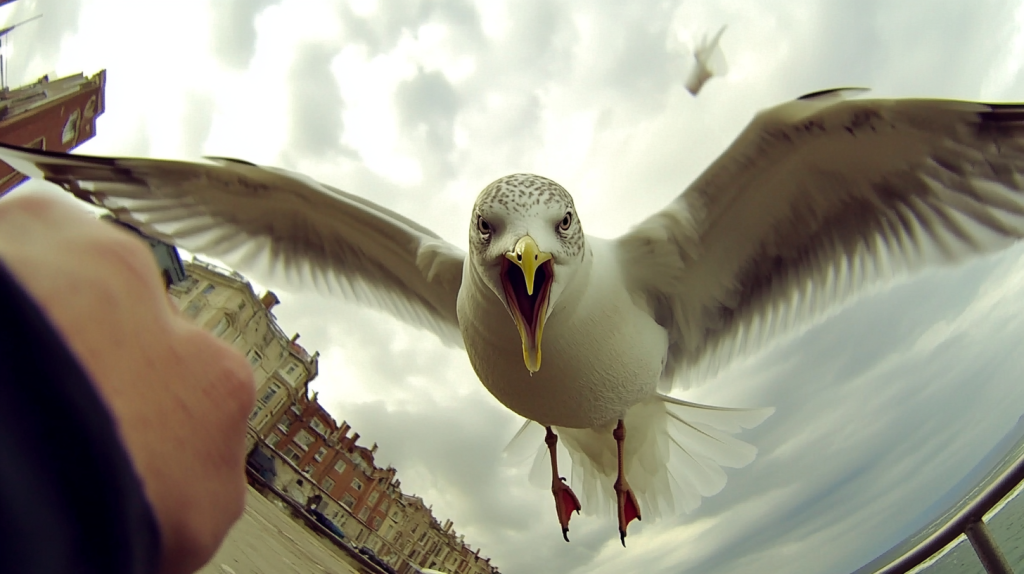Gulls have long been part of our seaside experiences, but these clever birds have adapted remarkably well to city life. As urban areas grow, so does the gull population within them. These feathered neighbours often get a bad rap, but there’s more to them than meets the eye. From their problem-solving skills to their surprising social behaviours, urban gulls have developed fascinating ways to thrive in our concrete jungles. Let’s explore some of their most unexpected habits that might just change how you see these oft-misunderstood birds.
Queueing for Food
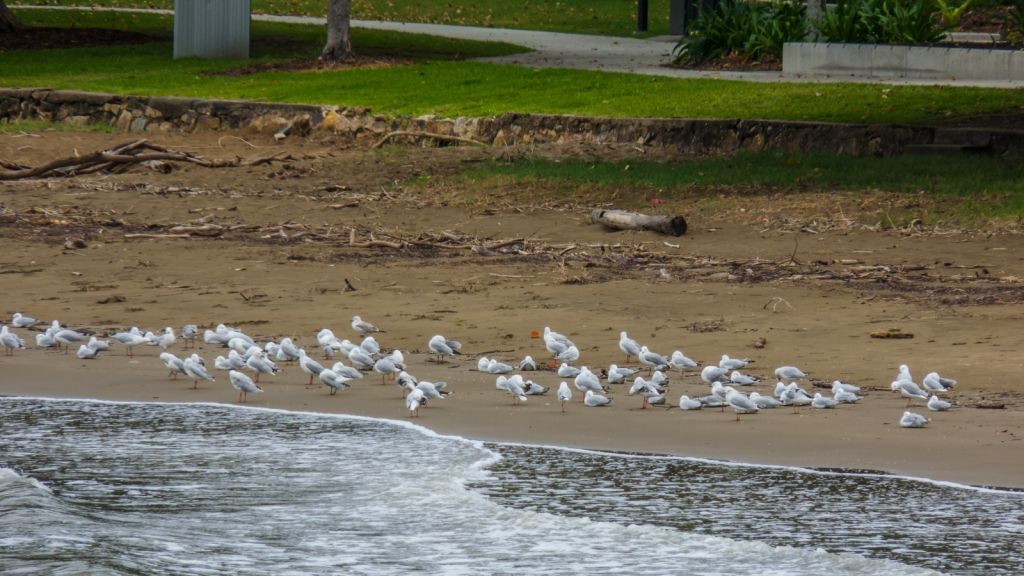
Believe it or not, gulls have been observed forming orderly queues when waiting for food. This behaviour is especially noticeable near popular feeding spots in parks or near bins. They seem to understand the concept of taking turns, which shows a level of social organisation many wouldn’t expect from these birds. Researchers believe this queueing behaviour might be a learned adaptation to reduce competition and conflict within urban gull populations.
Recognising Human Faces
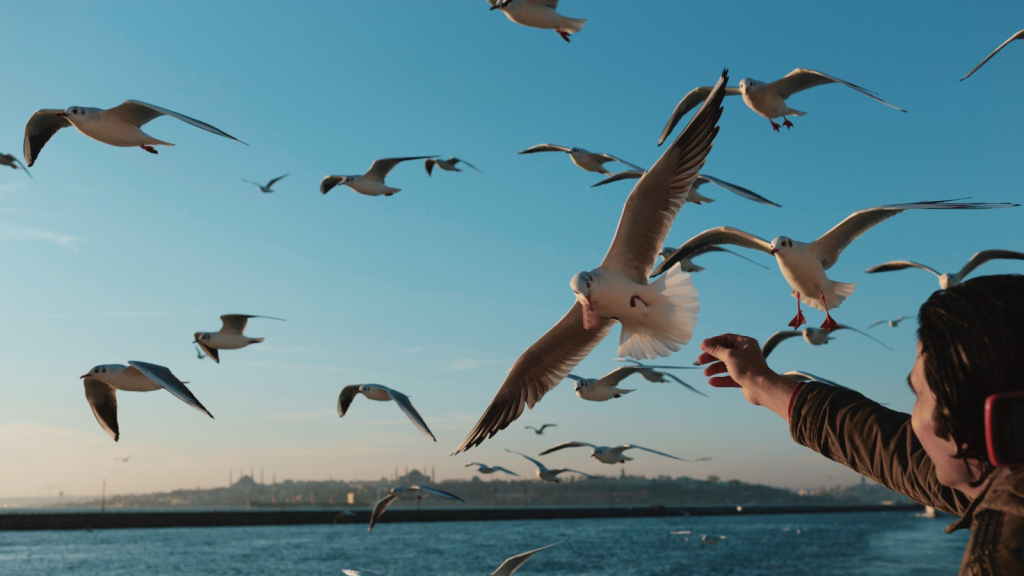
Urban gulls can actually remember and recognise individual human faces. They’ve been known to react differently to people who’ve fed them before compared to strangers. This ability helps them navigate the complex social landscape of cities and towns. Studies have shown that gulls can remember human faces for several years, demonstrating their impressive long-term memory capabilities.
Using Tools to Crack Shells
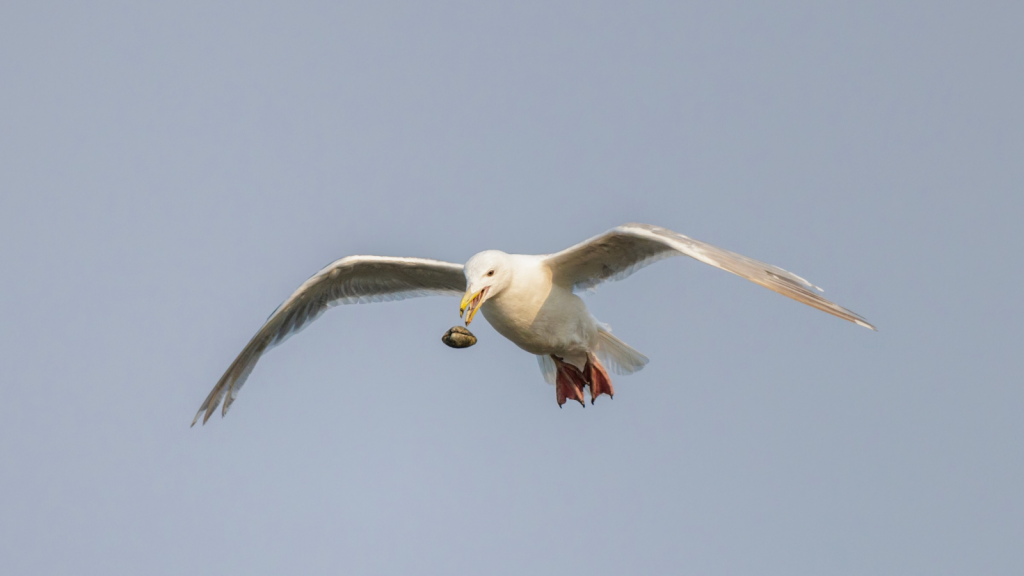
Some gulls have been spotted using hard surfaces as tools to crack open stubborn shellfish. They’ll fly up and drop their catch onto roads or pavements, using the impact to break open their meal. It’s a clever solution to a tough problem! This behaviour has been observed in multiple gull species and is passed down through generations, showcasing their ability to learn and adapt.
Nesting on Rooftops
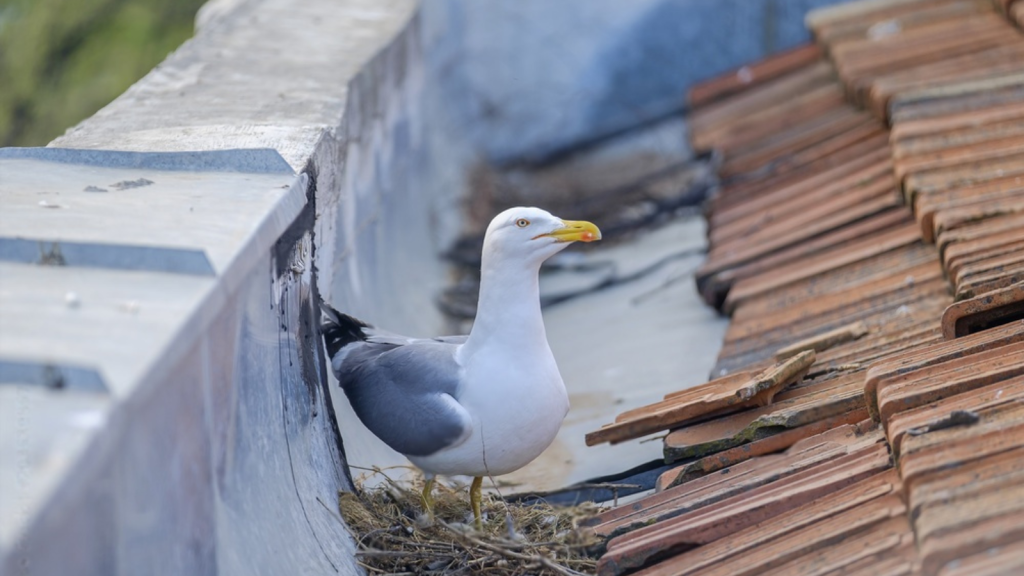
With fewer natural nesting sites available, gulls have taken to building their nests on flat rooftops. These urban perches offer safety from predators and a bird’s-eye view of potential food sources below. It’s a smart adaptation to city living. Rooftop nesting has become so common that some cities now implement gull-proofing measures on new buildings to manage population growth.
Mimicking Human Speech
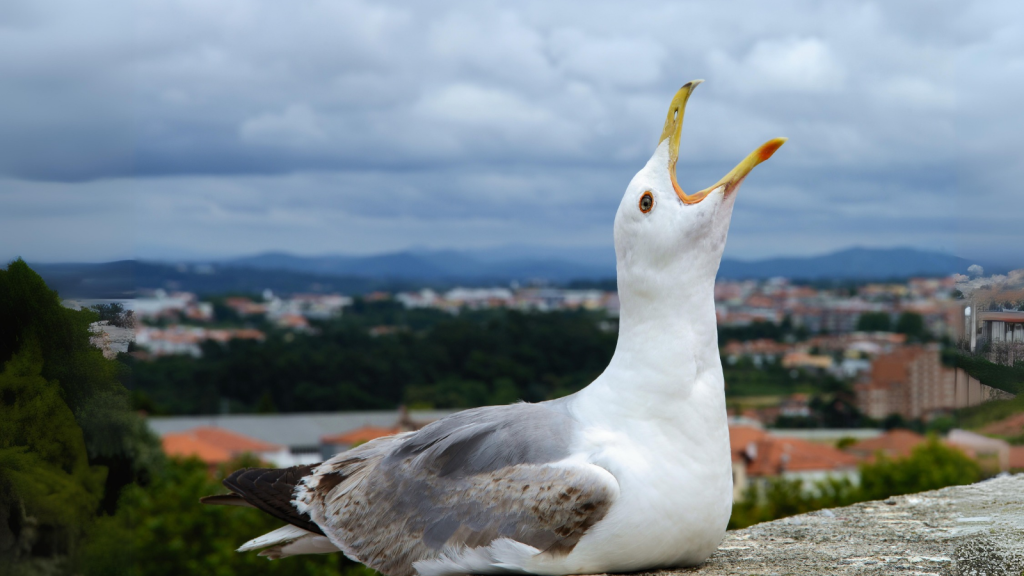
While not as skilled as parrots, some gulls have shown the ability to mimic simple human words or phrases. This unexpected talent showcases their intelligence and adaptability. It’s rare, but some lucky city dwellers have heard gulls ‘speak’! This mimicry is thought to be a result of their highly developed vocal abilities, which they typically use for complex communication within their own species.
Stealing Food from Hands
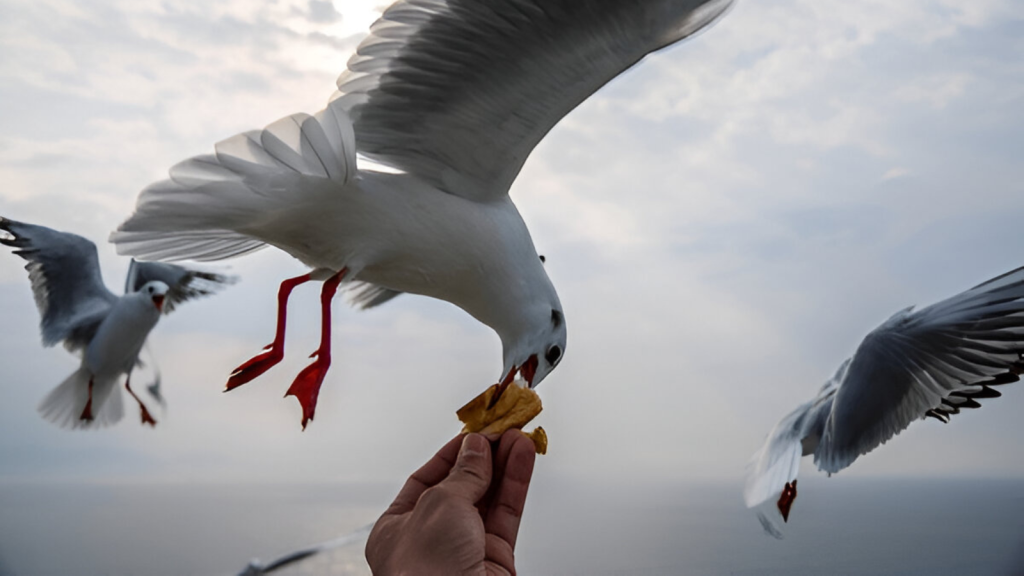
Urban gulls have become bolder over time, sometimes snatching food directly from people’s hands. This behaviour, while alarming, shows their adaptability and lack of fear around humans. It’s a reminder to be cautious when eating outdoors in gull-heavy areas. Gulls have been known to pass this behaviour on to their offspring, leading to generational changes in urban gull populations.
Diving in Fountains
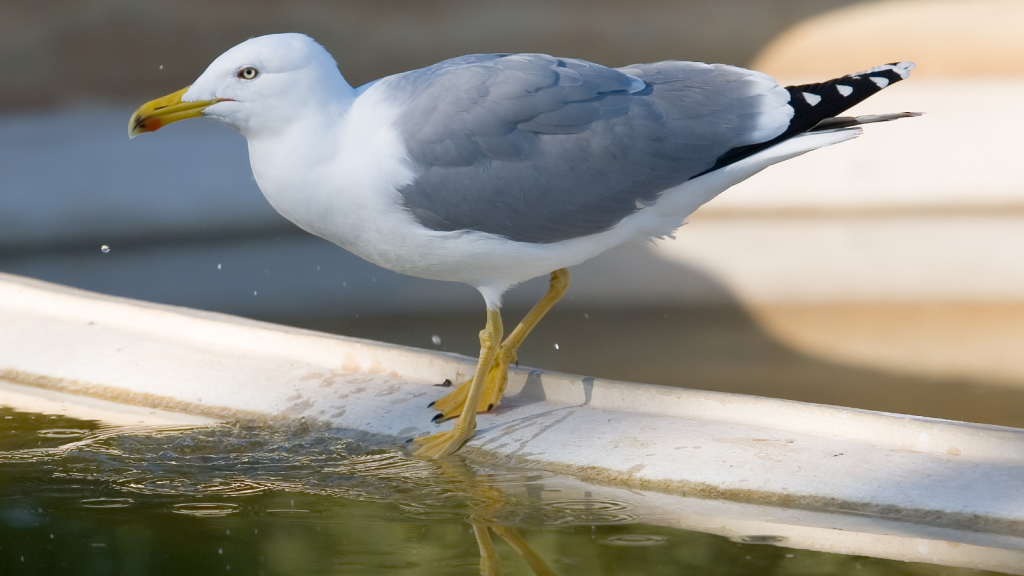
City gulls have been observed diving into public fountains, not just for a drink, but for a proper swim. This behaviour mimics their natural bathing habits in the sea. It’s a charming reminder of their wild roots in our urban spaces. Fountain-bathing also serves a practical purpose, helping gulls keep their feathers clean and in good condition for flight.
Using Traffic Lights as Perches
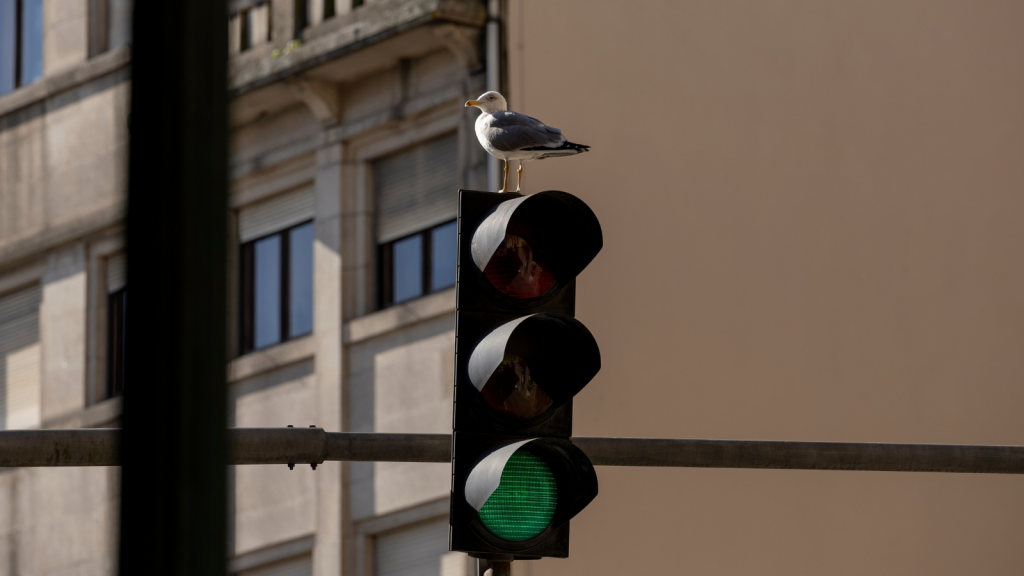
Gulls have learned to use traffic lights as convenient perches, giving them a perfect vantage point to spot potential food on the ground. This clever use of urban infrastructure shows how well they’ve adapted to city life. The heat emitted by traffic lights can also provide warmth to gulls during colder months, making these perches even more attractive.
Tapping on Windows for Food
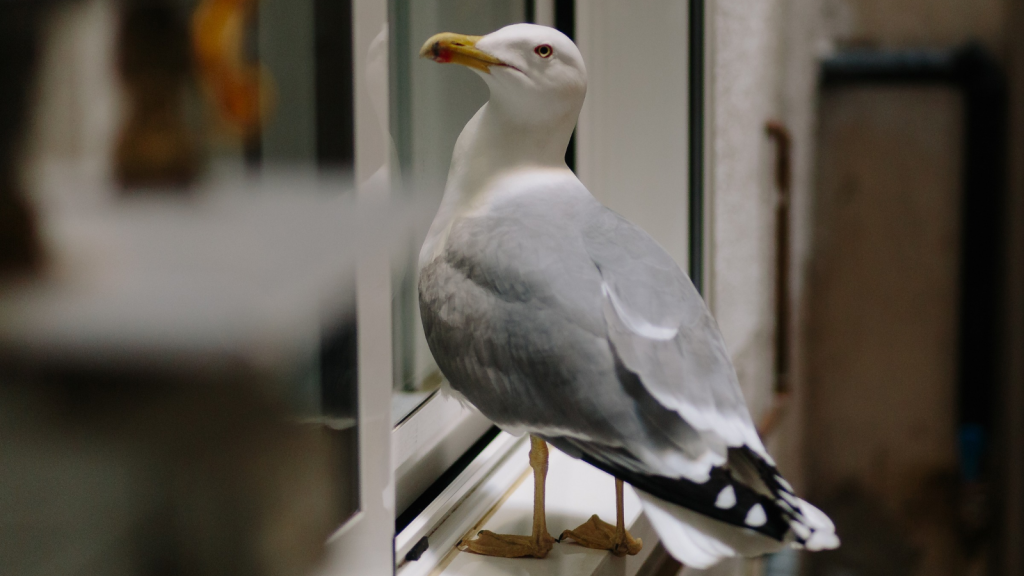
Some urban gulls have learned that tapping on windows can attract human attention, often resulting in food. This learned behaviour shows their problem-solving skills and understanding of cause and effect. It’s a cheeky but effective strategy! This behaviour has been observed to spread rapidly through urban gull populations, suggesting a form of social learning among these birds.
Raiding Bin Bags

Gulls have become experts at tearing open bin bags to access food waste. While this can be a nuisance for residents, it showcases the gulls’ intelligence and resourcefulness in finding food sources in the urban environment. Some gulls have even learned to recognise bin collection days, arriving just as bags are put out for collection.
Forming ‘Gangs’ for Protection
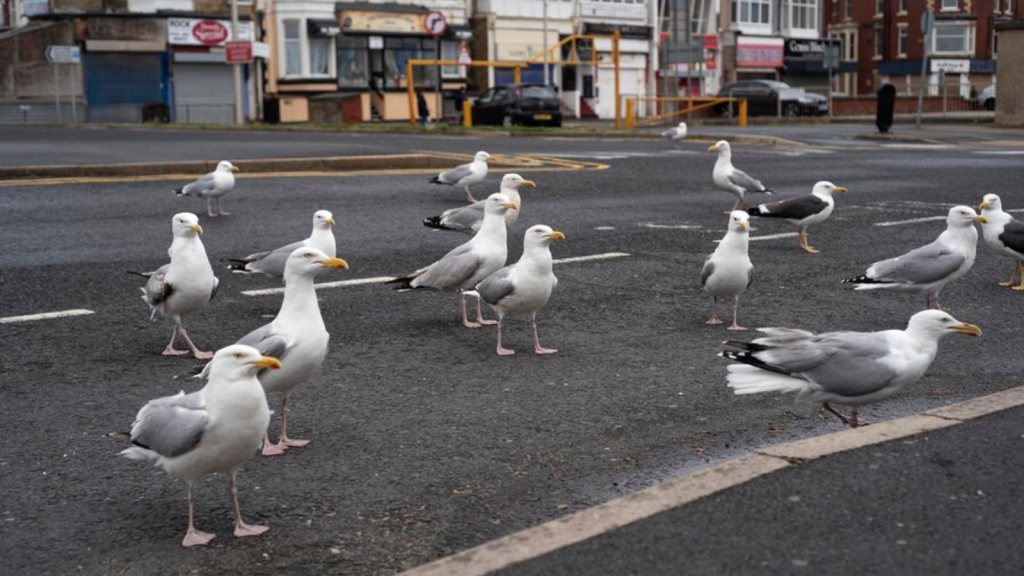
Urban gulls often form loose ‘gangs’ or groups for added protection and improved food-finding abilities. This social behaviour helps them navigate the challenges of city life more effectively. It’s a smart survival strategy in the urban jungle. These gull gangs have been observed working together to distract humans or other animals to access food, showing a level of cooperation typically associated with more complex social animals.
Nesting in Unusual Places
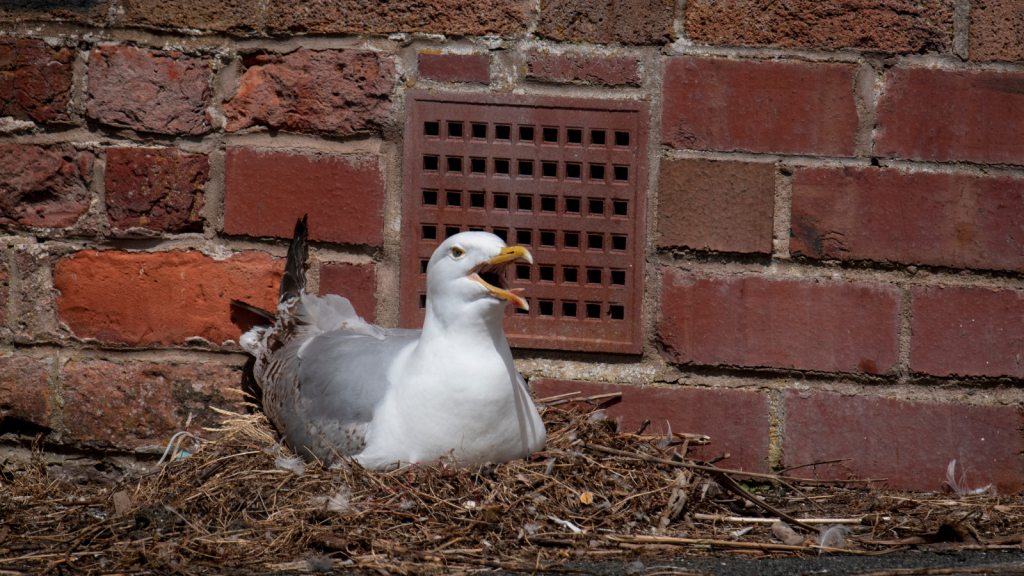
Beyond rooftops, gulls have been found nesting in some truly unexpected spots like abandoned cars, balconies, and even large plant pots. This flexibility in nesting sites demonstrates their adaptability to urban environments. Some gulls have been known to return to the same unusual nesting spots year after year, showing a strong attachment to successful breeding locations.
Using Pedestrian Crossings
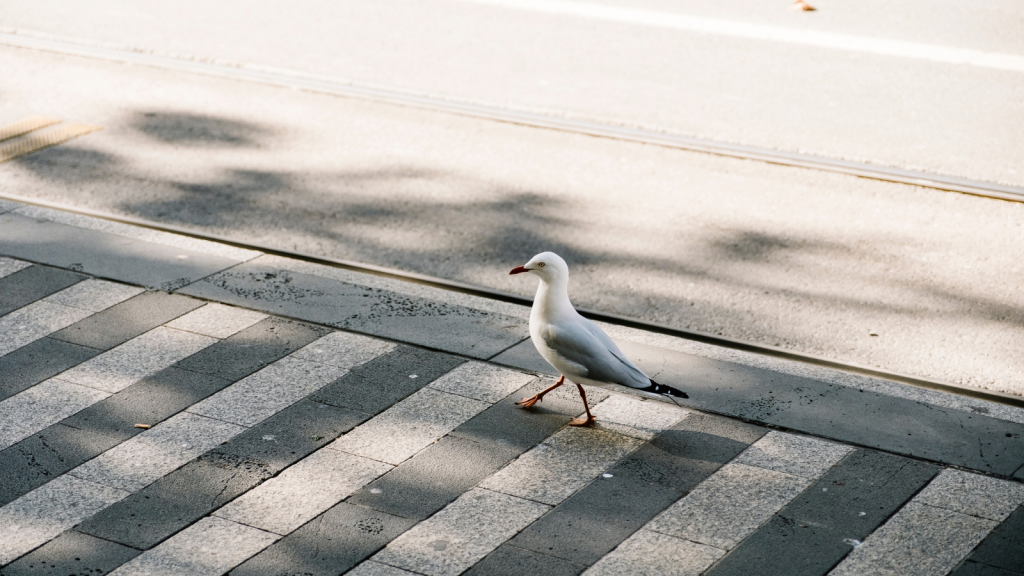
Remarkably, some gulls have been observed using pedestrian crossings to safely traverse busy roads. Whether they understand the concept or are simply following human behaviour, it’s an intriguing adaptation to city life. This behaviour has been documented in several cities worldwide, suggesting it’s a widespread adaptation among urban gull populations.
Dive-bombing During Nesting Season

During nesting season, urban gulls can become fiercely protective, sometimes dive-bombing passersby who get too close to their nests. While intimidating, this behaviour shows their strong parental instincts and adaptability to urban nesting sites. Gulls have excellent spatial memory and can remember ‘intruders’ who have approached their nests before, often targeting them more aggressively in future encounters.
Learning Human Schedules
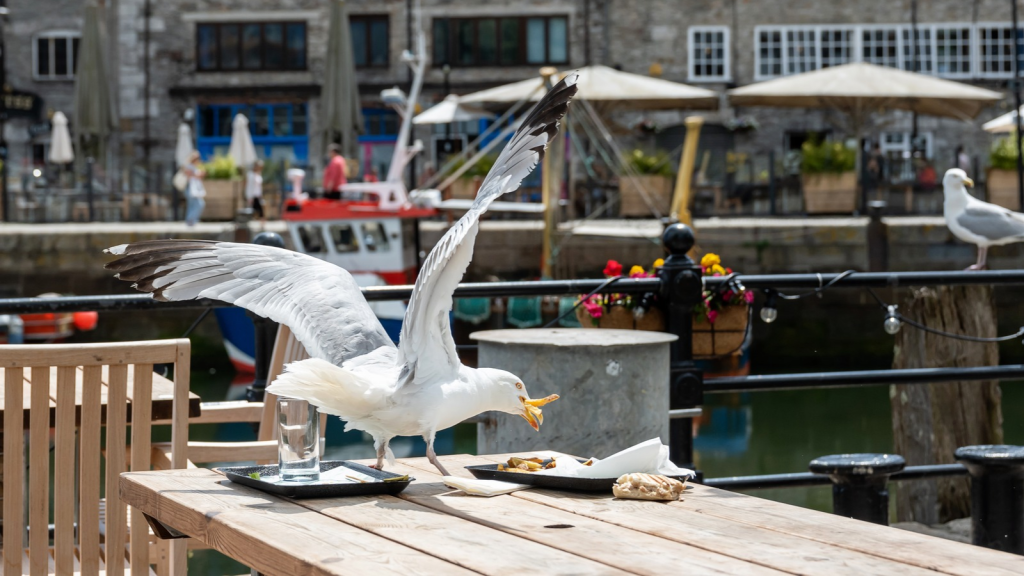
Urban gulls have shown an uncanny ability to learn human schedules, particularly those related to food availability. They often appear just as markets are closing or when outdoor events are wrapping up, ready to scavenge any left-behind treats. This time-keeping ability extends to learning the schedules of specific food establishments, with gulls often gathering just before closing time when excess food might be discarded.
Becky is a fervent wildlife enthusiast and pet care expert with a diploma in canine nutrition. Her love for animals stretches beyond the domestic, embracing the wild tapestry of global fauna. With over a decade of experience in animal welfare, Becky lends her expertise to OutlandishOwl through insightful articles, captivating wildlife information, and invaluable guidance on pet nutrition. Her work embodies a deep commitment to understanding the intricate lives of animals and a passion for educating others on sustaining natural habitats. Becky's hands-on conservation efforts and her knack for translating complex dietary science into practical pet feeding tips make her an indispensable voice for creatures great and small.

